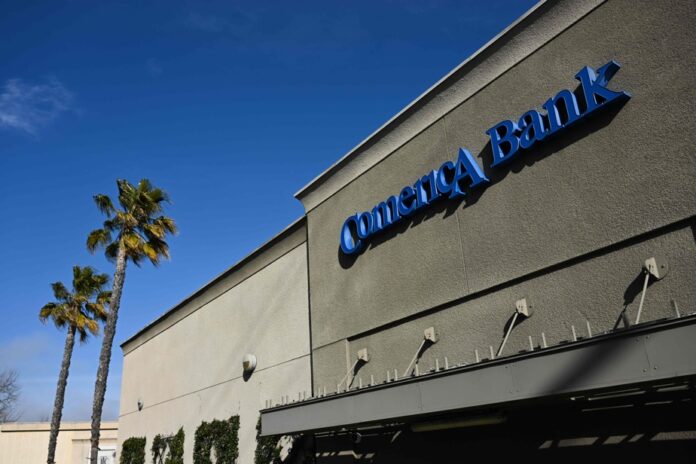(New York) Regional U.S. banks have mostly seen their deposits fall since the banking crisis, but their quarterly results haven’t worried the market, which doesn’t see a new weak link coming loose.
A wave of these medium-sized establishments have published their activity figures since the beginning of the week, barely a month after the streak which saw three banks remain on the mat, including two of the three largest bankruptcies in the history of the UNITED STATES.
Some of these regional players, including KeyCorp, parent company of the Cleveland-based KeyBank, Zions (Salt Lake City) or Comerica (Dallas), whose results arrived Thursday, had been brutally shaken in the days that followed. the initial blast, with the latest losing up to 55% of its stock market value within hours.
On Thursday, Wall Street didn’t have too much of a hard time against Comerica and KeyCorp, which were down 1.74% and 1.49% respectively by 2:40 p.m. EST, but Zions had a tougher time ( -4.65%), after revising its annual results targets.
Unsurprisingly, they have all seen their deposit base shrink, in limited proportions, with some moving to the largest US banks, the rest leaving the banking system altogether.
“Withdrawals have slowed,” Comerica Chief Financial Officer James Herzog said on Thursday’s earnings conference call. “And during the last two weeks of March, we saw a return to more normal movements. »
These uninsured deposits, that is to say beyond the guaranteed limit, have shrunk by 23% at Comerica.
“The more your deposits go down, the more your margins are under pressure,” noted CFRA’s Alexander Yokum. Banks that are subject to this phenomenon “will have to remunerate these deposits more, which will reduce their profitability”, according to the analyst.
In fact, most of these regional banks have seen their net interest income erode, key data which results from the difference between interest received and paid.
The table contrasts with the results of the behemoths JPMorgan Chase, Bank of America or Wells Fargo, which all did better than expected during the first quarter of the year.
“The big banks control” their rates and the interest they serve their customers, argues Alexander Yokum. In contrast, medium banks “have less leverage over their deposits and as a result their margins are going to be crushed. »
Eric Compton, from Morningstar, put the trend into perspective and recalled that it was expected, even before the banking crisis.
The banking sector has in fact suffered the full brunt of the rise in interest rates and the cost of money as well as the reflux of the abundant savings, built up at the time of the pandemic, in which the Americans have put themselves to draw.















